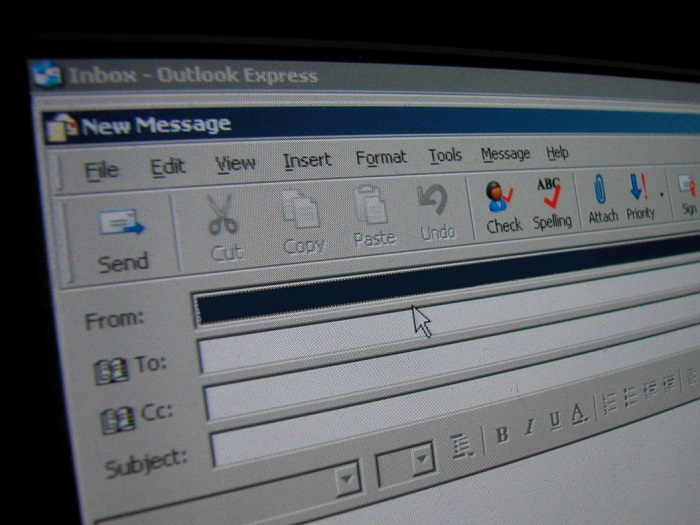Approximate read time: 13 minutes
This may seem obvious to you…
Lead generation is hard.
But if you can effectively, predictably and consistently generate qualified B2B (business-to-business) leads for your sales team, you can grow and scale your business’s revenue.
A simple B2B sales pipeline may look like this:
- Lead Generation;
- Qualification;
- Needs Assessment;
- Solution Presentation;
- Addressing Concerns;
- Negotiation;
- Close; and
- Product, Service Or Solution Delivery.
Points 1 to 7 is commonly referred to as the “sales cycle.”
The first two points, lead generation (suspecting and prospecting) and qualification (lead and opportunity creation), are usually a function of marketing.
And “selling” should be done from point 4 to 7.
Never at point 1 – we’ll get to this in a moment.
Let’s start with lead generation.
Most businesses generate their leads through three distinct activities:
- Inbound;
- Referral; and
- Outbound.
A lead is defined as someone who has shown interest in solving their problem.
Not shown interest in buying your solution.
This distinction is important.
Inbound leads may come from owned and paid activities such as content marketing, search engine optimization, social media, trade shows, channel partners, advertisements, networking and so on.
Referral leads may come from earned activities such as past customer word of mouth, public relations and so on.
And finally outbound leads may also come from owned and paid activities, such as outbound cold calling and so on.
Plot these three lead sources on a graph with the scales of “value to your business” and “amount of influence.”
NOTE: I am defining “value to your business” as how likely the lead is to convert to a customer.
And “amount of influence” as how likely your marketing and sales team can affect that conversation process.
All three activities have high value, but not all are equal in how much you can influence their outcome…
And remember, the key to scaling your businesses revenue is largely based on how you can influence leads and sales.
Inbound activities are high value to your business, but you have low amount of influence on a positive outcome.
For example, you cannot control the volume or quantity of leads coming in via networking or trade shows.
Referral activities are high value to your business, but again you have low amount of influence on a positive outcome.
For example, you cannot control the volume or quantity of leads coming in via recommendations from previous customers as they may not be passing on prospects who are a good fit (who have a potential need and can make a buying decision).
Outbound activities are high value to your business, but importantly you can have a high amount of influence on a positive outcome.
To put it another way, in B2B, inbound and referral activities are unpredictable because targeting, finding and communicating with prospects who have a potential need and who can make buying decisions is never clear or straight forward.
Beyond these difficulties, they are also expensive.
It’s not unheard of to pay $15+ per click on LinkedIn Ads.
Not per unqualified lead!
$15+ per click.
Stop relying on unreliable referrals and inbound activities to sell your product, service or solution.
Take control.
So, what’s left then?
The alternative is outbound activity if you have been following along.
But, let’s not get too ahead of ourselves…
Most people think outbound sales activity is solely cold calling.
Cold calls suck!
Everyone knows this.
And that is because most people find them annoying.
I used to cold call for charity donations for more than two years…
So I know more than a bit about cold calling and what not to do.
And the biggest inefficiency is what follows…
Most people doing outbound outreach (prospecting) try to close the sale on the first communication and interaction.
No one in B2B buys on the first interaction, especially not over the phone.
Let me say this another way…
No one proposes marriage on the first date – it never works!
So why should sales be any different?
And of those marketers who are smart enough to know this still find it difficult to reach a decision maker because getting past gatekeepers is the next challenge.
If you can get past that, you are still interrupting the decision maker as the contact is still unexpected.
And if you can solve that social hiccup, you have to explain why your call comes as a surprise.
Finally, you need to qualify them before you can start finding out about their needs.
This dynamic makes your conversation rate really poor and thus makes your marketing spend expensive.
In addition to all of this, many sales people simply don’t like making cold calls.
Why?
Suspecting, prospecting, qualifying, selling and account management are all very different skill sets.
Each of these functions and pipeline steps requires unique abilities and attitudes.
In other words, inbound and outbound activities are dissimilar, even though they get you to the same place.
Rarely is any marketer a jack-of-all trades.
And if someone is good at selling, they may not like or be good at prospecting and vice versa.
For example, on the one hand, inbound leads are handled by an Inbound Sales Representative or a Market Response Representative.
They de-duplicate the contact in CRM software, qualify leads and pass them on to an Account Executive or a Sales Executive.
Outbound Sales Representatives or Sales Development Representatives on the other hand, proactively build lists of prospects, initiate cold contact as well as qualify the lead and pass them on to the sales team.
Account Executives or Sales Executives then look after the selling (points 4-7 above).
And they stay in touch with the customer until the product, service or solution is delivered which is when it is handed to the Account Manager.
Account Managers attempt to increase the lifetime value of the customer.
This is a customer service role, not a sales role.
So, to summarize up until to this point, pitching to a cold, surprised and busy prospect is damn hard over the phone.
This all sounds fairy depressing, right?
Well here is the answer…
Cold outbound email.
It works!
Only if done correctly, however…
And by done correctly, I mean not like the cold calling discussed.
But what does done correctly look like?
The rest of this guide will concentrate on how to generate cold outbound leads and qualify them via email so you can start selling your product, service or solution and scaling your revenue.
It involves six steps.
Here they are:
- STEP 1: Identifying Ideal Customers;
- STEP 2: Suspecting For Contacts;
- STEP 3: Finding Contact Information;
- STEP 4: Initiating Outreach;
- STEP 5: Targeting Outreach; and
- STEP 6: Handing Over.
Let’s begin with…

1) Identifying Ideal Customers
Step one is about your ideal customer – the decision maker with a potential need:
- What job role, function or seniority do they have?;
- What geographic area do you service?;
- What industry or vertical are they in?;
- What is the company size?;
- And so on…
The more time you spend on this step the better your lead generation will be.
It is worth noting that the geographic area you service and the industry or vertical your ideal customer is in has the influence on how many leads you can generate.
Of course, if your company has few competitors and services global customers, you’ll be able to generate far more leads than if your company has a lot of competitors and services a small geographic niche.
That is a given.
This is because your potential customers are getting far more pitches in the latter example.

2) Suspecting For Contacts
Step 2 is about suspecting…
After you have defined you an ideal customer, you need a list of prospects.
A list of prospects could be built, rented or bought.
The latter two can be quite expensive.
Purchased lists can also be outdated.
This leaves us with the former – building a customized updated prospect list that has the ability to give you permission for follow-up and reflects your ideal customer.
So, you need to create a large, unfiltered list of your ideal customers.
The more the better.
This can be a very time-consuming task as you can imagine.
The best place to start is building using Microsoft’s Excel spreadsheets combined with Google searching.
Of course, the exact details of how to do this are beyond the scope of this guide.
Use your ideal customer’s job role, function or seniority, industry or vertical and the geographic area you service to find relevant companies.
Better still is if you know the company names already of those that are a good fit.
This will save you a lot of time.

3) Finding Contact Information
Step 3 is finding contact information…
Once you have a large list of your ideal customers, you need to find email addresses.
The way to do this is to copy and paste the companies’ web URL into a browser, and navigate to their contact page or the:
- Terms of Service page;
- Privacy Policy page;
- Social media profiles;
- WHOIS information; or
- Just ask them…
By the way, I have created systems, processes and software that automates steps 2 and 3 with ease.

4) Initiating Outreach
The next step is initiating outreach…
It’s time to find the correct decision maker.
Contact the email addresses you found and ask for the contact details of your ideal customer.
Most are very generous with this information.
Internal referrals are powerful as you have been screened by their colleague.
In the process, it is likely that you will get hard bounces, so don’t upload them to an automated email marketing platform.
You could get banned for spam.
You have been warned!
I have seen this multiple times.
The wording of your email is crucial and good copywriting is a fine art and worth its weight in gold.
Gary Halbert and Joseph Sugarman are great copywriters to learn from as a start.
Whatever you do, don’t write your emails in “corporate speak.”
Write them like you were writing to a friend.
This also helps with spam compliance.
I’ll get to that shortly…
Make sure your emails are text based and short.
HTML emails looks corporate and appear like you are selling something.
Emails should be easy to read on smart phones, show your credibility and have a single call to action.
Send communication before 9 and after 5 and avoid Monday or Fridays.
These times are particularly busy for business inboxes.
Send no more than 100 emails a day so you do not overwhelm your sales team.
If you get an “Out of Office” autoresponder, you may be offered an alternative email address to reach your ideal customer.
Log all responses.
Of course, the exact details of how to do this are beyond the scope of this guide.
I don’t publish scripts for this because it won’t reflect your business’s voice and scripts can become overused and thus ineffective if a lot of people are contacting the same companies with the same scripts.
It looks too canned.

5) Targeting Outreach
Step 5 is targeted outreach…
This step involves broadly qualifying the decision maker for their problem and your solution.
This is not a sales communication.
Let me repeat!
This is not a sales communication.
This is about them, not you.
You want them to raise their hand, opt-in or show interest in solving their problem, not buying your solution.
In this communication, you are looking for a high level fit.
Give them a short pitch about the problem your business solves.
Ask them if they have the related need and if they want to solve it.
Or any other qualifying characteristic…
Of course, the exact details of how to do this are beyond the scope of this guide.
You should be aiming for a 10% response rate.
If they reply that they are not interested, explain that they will not hear from you again.
If they reply that they are may be interested but not now, ask for permission to ask again in three months.
If they don’t reply, follow up with them in a week asking if they had time to consider your email – it could have got lost.
Only follow up one time after that, saying it’s your last.
You don’t want to harass them if they are not a decision maker or don’t have a need.
So let’s talk about the elephant in the building:
Spam.
You can read the Spam Act 2003 here: http://www.comlaw.gov.au/Series/C2004A01214.
But in essence, you need:
- Gained consent for commercial communication;
- Clear identification of who sent the communication; and
- The ability to stop any further the communication.
Here are some guidelines that may help you comply:
- All links, phone numbers or contact information in the message should be intended to identify you by being placed in the signature and do not lead to content with a commercial purpose;
- Take this one step further – ask to be directed by colleagues to a person related to the role or function you have contacted. Step 3 above addresses this;
- Only find email addresses that are publicly published. Don’t guess email addresses or harvest them. Don’t contact emails which say they don’t want to be contacted publicly;
- When you reactivate old email lists, take the same approach as a cold list and gain inferred consent by asking to be directed by colleagues to the related person who holds the relevant role or function;
- Publish your business name, address, website, phone number and email in the email signature for the sole purpose of identifying the sender of the message and make sure they do not lead to content with a commercial purpose. Staff should use their name both in the body and field;
- Your email address should stay active for 30 days after ceasing contact;
- Have unsubscribed information in the P.S. of email. Do this because the P.S. section is the one of the most read parts of an email;
- Remove unsubscribes immediately; and
- Unsubscribing should cost recipient nothing.

6) Handing Over
The final step is handing over to the sales team…
Those who have shown interest are qualified.
You need to hand over, pass the baton or transition this lead to your sales team.
AKA Account Executives.
The sellers.
The closers.
They start the sales cycle with a quick re-qualify, followed by a needs analysis with this new hot, qualified lead.
This could be a warm email introduction with the qualified prospect from the sales person with each other’s contact details.
Make sure you enter the lead’s details into your CRM software at this point.
A bonus step, to maximize the return on investment of this activity, re-market the unqualified lead through advertising platform such as Facebook Ads so they potentially become inbound leads.

Take Action
Okay, you made it.
You now have a solid plan for generating qualified B2B leads.
That’s the full B2B Lead Generation Process and will be more than enough for you to get started on your own.
You can get the printed illustrated Process Map of this and 20 others for free, here
And if you’re serious about marketing and selling more, the logical next step is to contact me to help you do it yourself, have me do it with you, or have it all done for you.
This maybe the momentum you need to get great marketing and sales results.
Now let’s learn about The Partner Recruitment Process.
Or do you simply want more like this?
Join below to be notified immediately about new content and more. No annoying daily emails and no spam – just good content when it’s posted.

